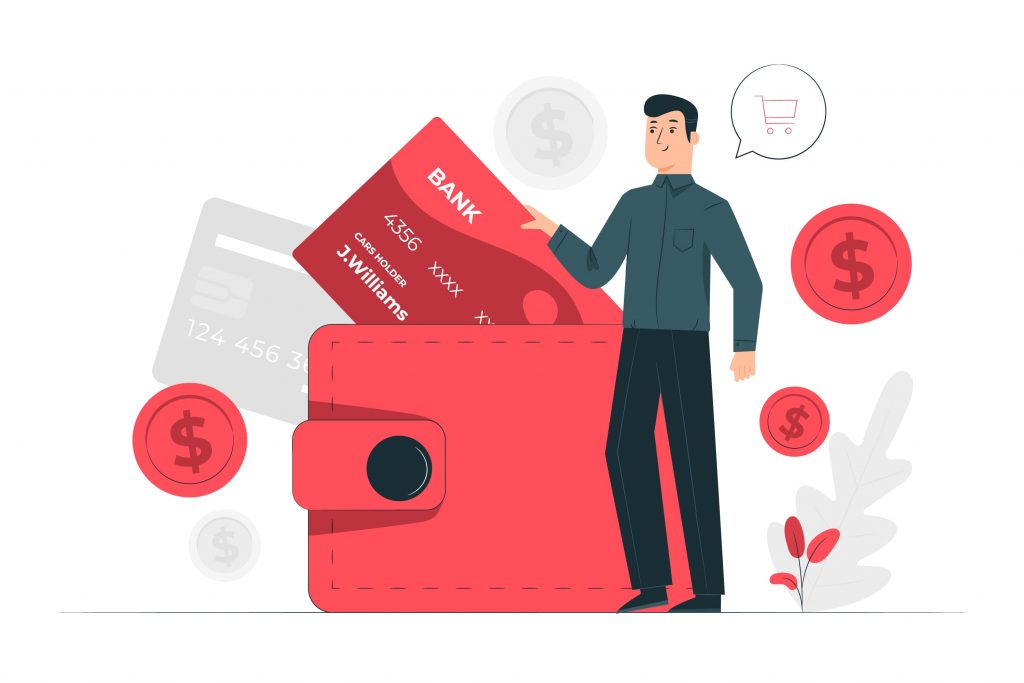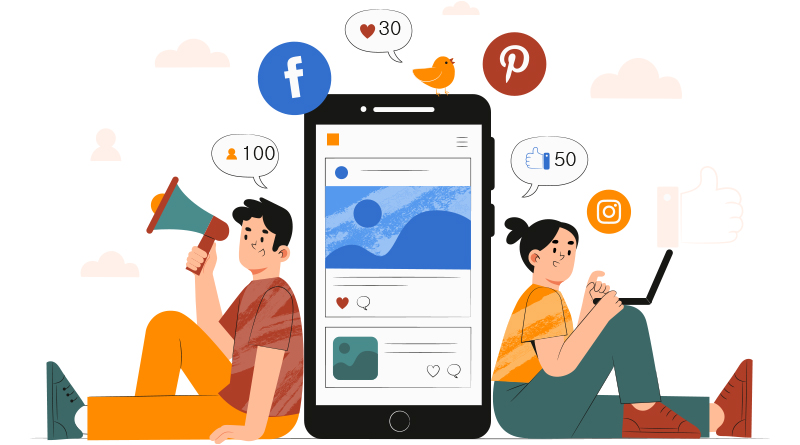When we talk about a digital product, it does not have to be a tangible one. It is an intangible product that can be sold across the internet for people to download and stream online.
The digital product industry is one of the fastest-growing industries, with a product market that is expected to cross $240 billion by the end of the year.
With the industry growing immensely, there is rising competition in the market. For your product to stand out, all it needs to have is the right advertisement and promotion to gain success.
This blog will cover the various steps required to sell a product from a marketer’s perspective. Furthermore, you will find some efficient yet effective marketing tips for selling digital products.
 About Digital Products
About Digital Products
As mentioned earlier, digital products are intangible products that can be downloaded or streamed online for use. They are comparable to your intangible assets.
Digital products can be categorized as assets because they do not have to be purchased again and again. They are a one-time investment for your business as with one-time development cost- you can sell the services or their license for its use.
Read: Creation and Execution of Digital Marketing Plan for Online Business
In today’s digital economy, you can sell various types of digital products. Among these are:
- Software– With a team of software developers, you can create software by writing codes and sell the digital product to users. They could be anything from WordPress plugins to remote working tools, task managers or any other type of software that the market needs. To get started with your digital product, you can work on many software service products/SaaS product ideas.
- eBooks– Even if paperback books retain their appeal in today’s fast-paced world, there still is a growing preference for eBooks. You can sell eBooks by creating a website or by selling them on different platforms. They are a fantastic way to increase revenue.
- Audio and Video– There is a wide variety of audio and video products you can sell, including lectures, study materials, exercise audios/videos, reusable music and much more.
- Photographs– Another popular digital product is selling high-quality pictures. Many online platforms and websites sell high-quality pictures.
- Courses– After the pandemic hit, the education system completely shifted to online mode. It also has made online courses a vital part of studies for everyone. You can sell membership to people in exchange for access to the online courses you offer.
Now that we’ve established the many forms of digital products- let us learn how to market them.
How to Begin Selling Digital Products?
 When selling a product, the product owner must keep the below-mentioned stages in mind. It will not only help to increase sales but will also keep users engaged throughout the process.
When selling a product, the product owner must keep the below-mentioned stages in mind. It will not only help to increase sales but will also keep users engaged throughout the process.
While selling the items, the owner must be aware of the customer’s awareness, contemplation, purchasing and loyalty.
Here is the step-by-step process you can follow to sell your digital product efficiently.
Step 1. Create Buyer Personas
Before starting any selling process, you first need to know your target market. Knowing your target audience will help you in creating a better and focused strategy to sell your product.
When you create a buyer persona, you make a fictional character keeping in mind your target audience. The demographics like their age group, behavior, background, economy, goals, buying pattern, challenges, etc., are to be considered while making the persona. You can gather these details from your existing customer data.
Consider every stage, make a persona and search for every possible content and query. Creating this will help you create a personalized marketing experience for your target audience.
Step 2. Create Your Brand Image
By saying create a brand image, I mean you need to familiarize your audience with the brand name, its logo, color scheme, etc. When it comes to a new product company, it won’t be able to get as much response as it should until it has a considerably high online presence.
Easy steps to building an online presence involve:
- Active market research
- An attractive business name
- Alluring logo, design, color theme, etc., for the brand
- Promoting the brand in every possible way
- Making changes according to the customer feedbacks
A web development company can take care of the first three steps for you, but the real deal is the fourth and fifth steps. The web development company will help you with everything right from creating a logo, finding an attractive name for your online brand and finding the perfect theme for it.
But the real deal is,
How do you market your online brand?
Here are some steps for the same:
- Work on search engine optimization so that you may begin ranking for significant keywords on search engines such as Google.
- Initiate a blog and continue to publish informative material depending on consumer personas and the stage of their purchasing process.
- Guest blog on high authority sites to obtain exposure and link feeds that will help you rank higher.
- Remember to keep your social media profiles active. Maintain consistency across all social media platforms.
Step 3. Pre-Launch Excitement
The pre-launch period is really crucial for any product. If you successfully create a buzz and excitement in this period for your product, you already build a good image for your product’s launch and success.
Add a little creativity and innovation to your pre-launch, and voila! You’ve created a buzz about your product even before its launch.
Here are some ways to keep your audience engaged and excited for your product:
- To build suspense around the product, you can share little information and features of the product but hide the details. Doing this will create a sense of curiosity amongst the audience regarding your product.
- Sharing “behind-the-scenes” videos will make people know about the manufacturing process and keep them interested.
- Keeping the audience updated about the new happenings and the progress of your product will create excitement about it.
- Introducing early-bird or limited-time discounts can help people buy the product in fear of missing out.
- You can start countdowns, host competitions, and offer limited free products before the launch so that people get engaged in these activities.
In order to turn an idea into a selling digital product, you must first create it. If you want to build the product yourself or hire a team, you can start from scratch.
You can begin pre-launch marketing tactics once the product is ready and in beta testing. At this time, contests, countdowns, and sharing short clips of the product can be great moves. Get in touch with influencers and others once the product is launched so that you can collaborate on promoting it.
In order to sell a digital product successfully, the right marketing strategy is essential.
Step 4. Have a Landing Page
Even while selling a digital product, owners need to know that directly having a sales page is not a way to go about it. From a marketer’s perspective, before a sales page, a landing page is necessary.
Before buying anything, a customer browses for his options first. No customer visits a site only to purchase a product. A landing page should clear all the doubts for your potential customer and tell the features of your digital product. It should also navigate the customer once they have decided to buy your product.
Having a landing page will help your customers connect to you on a better level, and the details about the product will attract them to buy your digital product among all the competition. It is a good opportunity to engage your customers and even the people who are just browsing.
Marketing Suggestions
 Even with the best quality products, the way a marketer promotes the digital product plays a pivotal role in the selling and success of the product.
Even with the best quality products, the way a marketer promotes the digital product plays a pivotal role in the selling and success of the product.
-
Influencer Marketing
In order to help in sales, you can partner with influencers and micro-influencers to promote your digital product. They can try it and give feedback to build the trust of the customers.
-
Create a Buzz
To create a buzz around your digital product, you can go live, host events, give sponsorships, invite special guests to the launch or use any other means. Social media is the best way to attract the younger generations to your product, so staying active on social media is a must.
-
Suitable Name
Choosing a product name that resembles its usage is necessary for a product. In a bid to have a unique name, owners often tend to forget that their product name should reflect their product.
-
Right Pricing
Pricing is another critical consideration in the sale of digital products. It should be neither undervalued nor overpriced. While promoting, marketers can use comparison to demonstrate how investing in a digital product can be more beneficial than any other purchase.
-
Review Generation
The next marketing suggestion is to seek reviews and testimonials. People believe in word of mouth and real-life reviews/testimonials. According to an eMarketer analysis, people trust product reviews 12 times more than product descriptions.
-
Product Videos
Convincing videos that create awareness about the product and its use help a lot in product promotion. People love watching videos, and it is a prime source of consuming information.
Create a Great Digital Product!
Right from the idea popping into your head to executing it and making a digital product is a long journey in itself. With an amazing team to build your digital product, you can do wonders.
The appropriate marketing strategy is vital in the selling of a digital product. Building a product without promoting it is never a good idea.
With these tips handy, you can create and market your digital product and make it a huge success!







